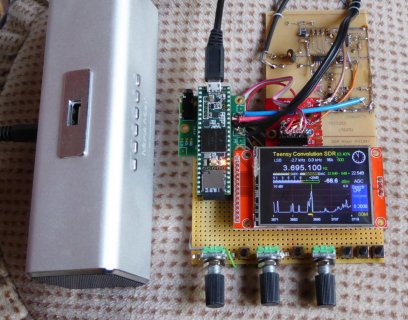Hi Wolfgang,
for wideband FM reception, the SDR is in 3x undersampling mode, so your math is approximately right, if you divide the real receive frequency by 3

However, in all demodulation modes -except for WFM- the SDR uses a digital IF of 1/4 * sample rate.
Lets say you chose a sample rate of 234k, which in reality is exactly a sample rate of 234375Hz
That is why the display would show ( 99700000 - 3/4 * 234375 ) / 3 = 33174739.6Hz, which is exactly what is displayed when you do the following:
* adjust sample rate to 234ksps
* Set demodulation mode to WFM
* tune to 99.70MHz
--> the frequency display automatically does the math for you, it shows the real receive frequency

.
* listen to fine audio
* set demodulation mode to something else: the display shows 33.174.739Hz (and you know why it shows this ackward figure)
* set demodulation mode to WFM (the display shows: 99.700.000Hz) and continue to listen

For wideband FM reception, you need a very large sample rate, because an FM signal has +-75kHz frequency deviation. According to Wikipedia, this corresponds to a modulation index of 5, which leads to a needed bandwidth of 180kHz for MONO FM reception. So for nice MONO audio, you need at least 192ksps sample rate.
For STEREO you would better have a bit wider bandwidth, so I choose 234ksps. According to Wikipedia, you would need 270kHz of bandwidth (Carson formula: Bandwidth = 2 * frequency deviation * base band bandwidth [60kHz]) for all components of the FM signal: the L+R signal, the 19kHz pilot carrier, the L-R signal centred at 38kHz and the RDS data signal centred at 57kHz (RDS decoding is not -yet- implemented). Dont try WFM with the standard sample rate of 96ksps, it will sound extremely distorted, because the frequency deviation is +-75kHz and the signal will be aliased with such a small sample rate and unwanted signals will fold into your FM audio baseband.
All the best 73s
Frank DD4WH



